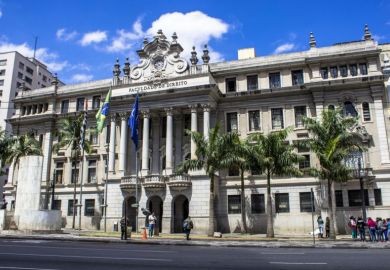Browse the full results of the World University Rankings 2022
This year, a record 2,112 universities submitted entries to the Times Higher Education World University Rankings, from 111 countries and regions across the world. As ever, we are very grateful to these universities for supplying the breadth and depth of data required, and for working with us to verify and validate these data. This represents a huge effort for both the THE team and for the many people in universities who work hard to prepare and check the data.
Every year, despite these efforts, we have to exclude some universities from the rankings because our World University Rankings methodology has very strict criteria for entry. Universities must publish at least 1,000 papers in reputable publications in a five-year period – between 2016 and 2020 for the 2022 rankings. Universities are also excluded if they only teach in a single subject area, or if they don’t teach undergraduates.
This makes the ranking a very exclusive club, but one that many universities strive to be part of.
The number of ranked universities has grown year on year. When the first rankings were launched in 2004 they were limited to just 200 participants, growing to 400 in 2011. In 2016, we removed this arbitrary limit on the number of participants and the number of ranked universities jumped to 981.
This year, we are pleased to congratulate the 1,662 universities that met the criteria and so appear in the World University Rankings.
However, this still leaves 450 universities that submitted data for the 2022 rankings but didn’t meet the criteria. Many of them are growing their capabilities; others are newly founded, or are changing their missions.
We think that it is important to recognise those institutions and so this year we have created a new “reporter” status for them. This status indicates that they are active participants in the rankings process, even though they have not been ranked this year.
Practically, this means that they are listed, alphabetically, at the end of the rankings table, and rather than being assigned a rank number, they are instead labelled reporter institutions.
Universities with reporter status will therefore be visible in a way that they weren’t previously, and we will feed back to those universities where they failed to meet the criteria to help them as they work towards admission to future rankings.
For the first time our readers will also be able to see the wider range of universities that are actively working towards appearing in the rankings.
We would very much welcome feedback from universities and users of the rankings to understand how they feel this reporter status could be developed to present further useful information, such as how close universities are to appearing in the rankings.
Do you have any queries or suggestions on our World University Rankings? Get in touch at profilerankings@timeshighereducation.com.
David Watkins is head of data science at Times Higher Education.
Register to continue
Why register?
- Registration is free and only takes a moment
- Once registered, you can read 3 articles a month
- Sign up for our newsletter
Subscribe
Or subscribe for unlimited access to:
- Unlimited access to news, views, insights & reviews
- Digital editions
- Digital access to THE’s university and college rankings analysis
Already registered or a current subscriber?








